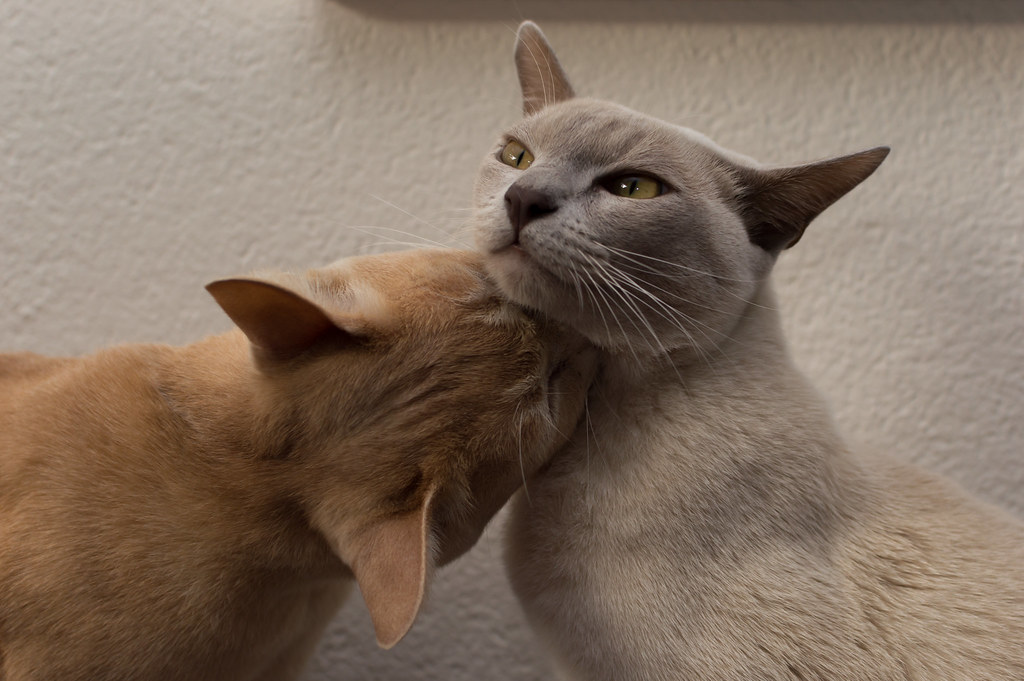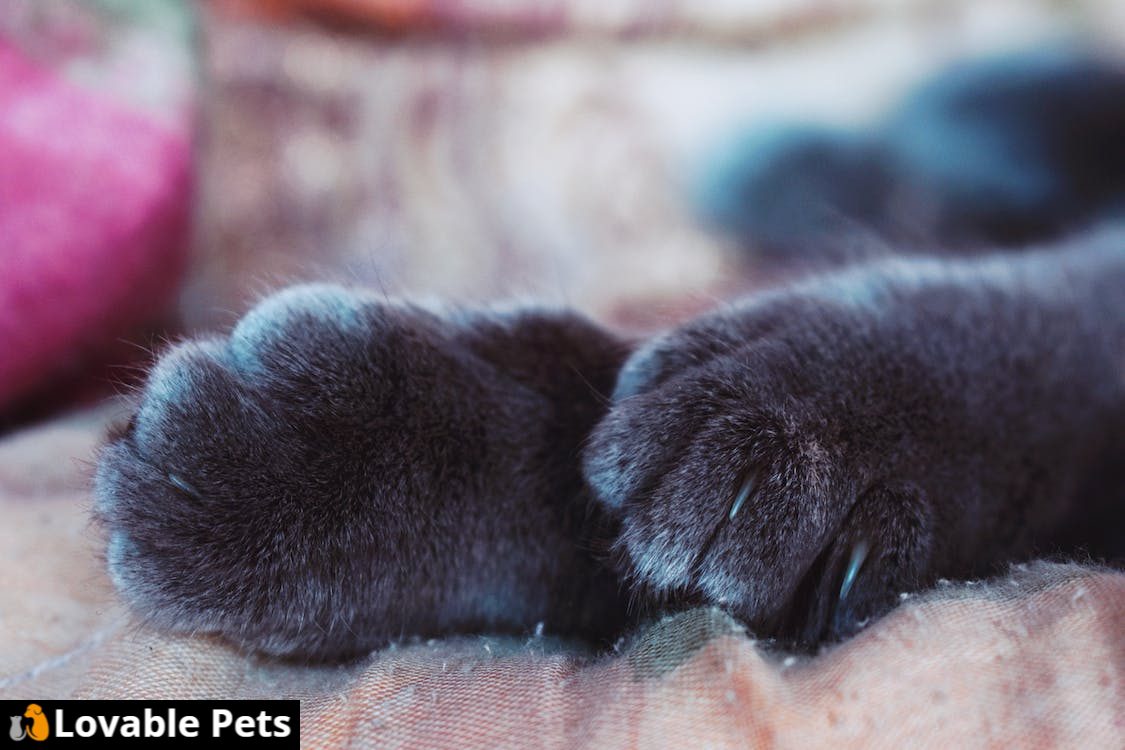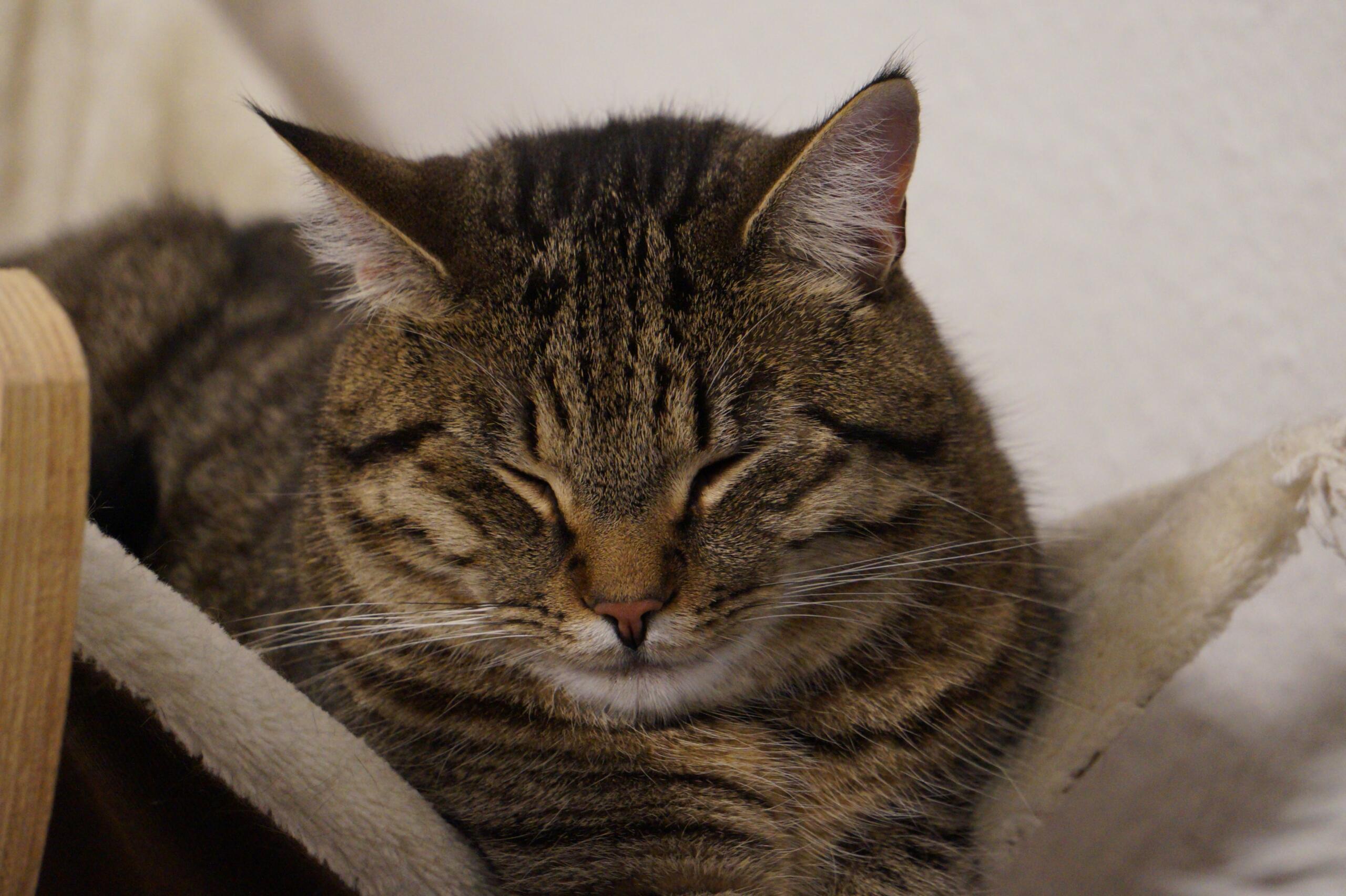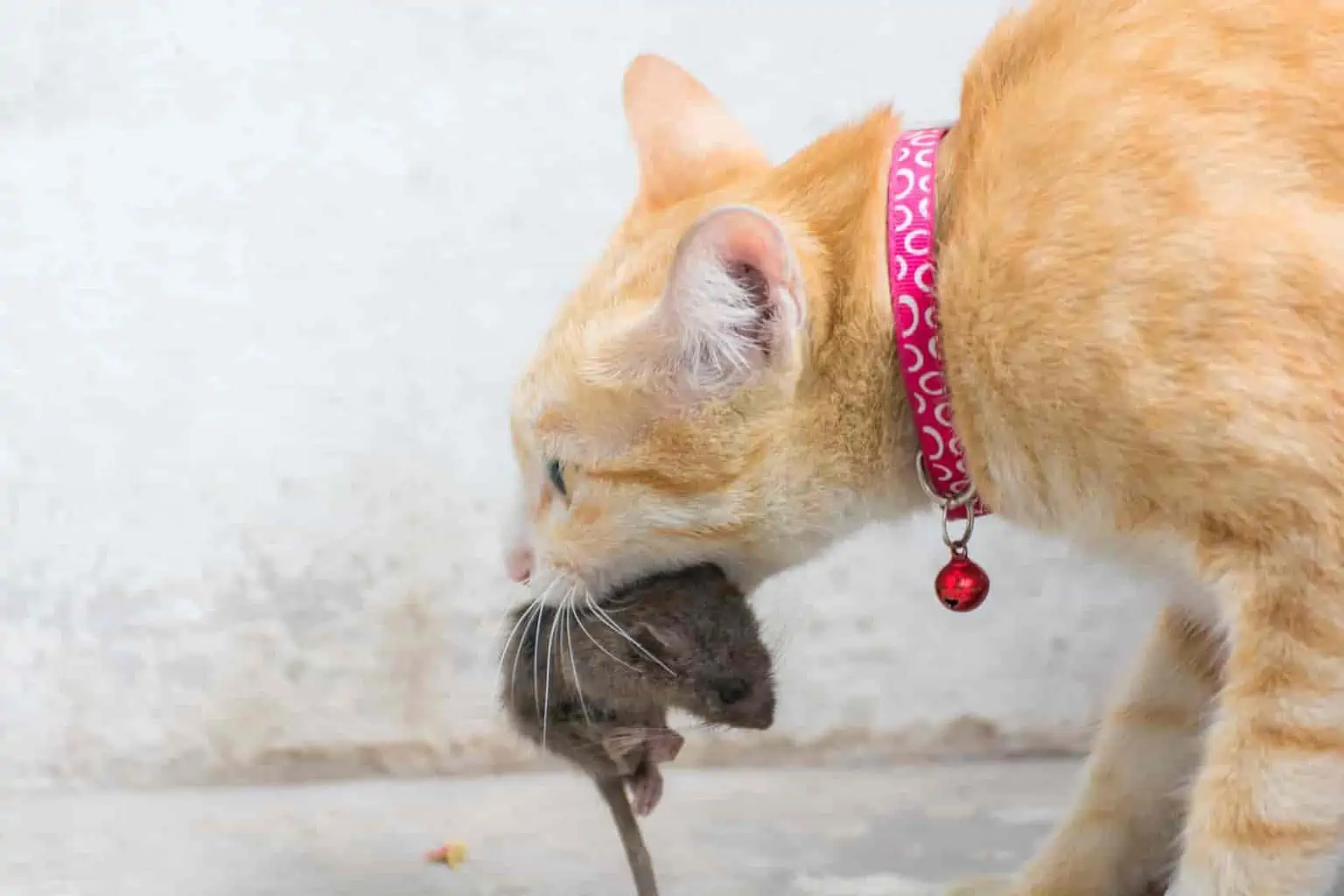What do cats think when we kiss them?

Navigating the World of Cat Predators and Potential Threats
Cats, those beloved companions of countless households, are not immune to the dangers of the wild. While we often picture them as sleek and independent cat predators, the reality is that many animals pose a threat to our feline friends, either as predators or in self-defense. In this comprehensive article, we will deep deep into the varied world of creatures that interact with cats, either as cat predators or potential sources of harm to cats.
Understanding the Cat Predators That Hunt
When we think about cats and their potential cat predators, it’s natural to envision the typical household pet as a formidable hunter. However, the truth is that numerous animals, both large and small, may consider a cat as potential prey, depending on various factors such as the cat’s size, location, and circumstances. Let’s explore some of the most prominent predators that can pose a threat to cats:
1. Large Carnivores
Cougars, Wolves, and Coyotes: In certain regions, these formidable cat predators may target cats, particularly those allowed to roam freely. The risk is higher in areas where these large carnivores share territory with domestic cats.
Cougars, also known as mountain lions or pumas, primarily prey on deer, but they have been known to stealthily sneak up on pets, especially those allowed outside at night. These opportunistic hunters may take the opportunity to attack domestic cats, particularly if other prey is scarce or while rearing their young.
Wolves, once almost driven to extinction due to habitat loss and hunting, have seen conservation efforts that protect them under the Endangered Species Act in the U.S. As human populations encroach on their natural habitats, wolf-human interactions, including wolf-cat interactions, are becoming more commonplace. Wolves are also opportunistic hunters and may target cats, especially during colder months or when other prey is scarce.
Coyotes, prevalent throughout the U.S., are known to actively prey upon cats, especially during the pup-rearing season. Both packs and individuals have been observed successfully attacking and killing cats. Their olfactory senses and keen eyesight aid them in hunting, and they are opportunistic predators, meaning they will prey upon whatever crosses their path, including domestic cats.
2. Birds of Prey
While birds are often viewed as creatures that cats might chase, some large raptors have been known to reverse the roles and hunt cats. These aerial predators include:
Eagles: Although experts consider eagles preying upon cats to be uncommon, some large eagles, such as the bald eagle, have the ability and strength to prey on cats. The bald eagle is the second largest bird of prey found in North America. These birds primarily hunt during the day, swooping down and latching onto their prey, which can include fish, birds, small mammals, and rodents. While they are capable of preying on cats, whether they would do so remains uncertain.
Hawks: Of all the hawk species found in the U.S., only the red-tailed hawk is capable of preying upon cats, especially smaller or unsupervised cats. The red-tailed hawk, the most common hawk species in the U.S., hunts small animals and may not distinguish between wild mammals and small cats. Although not a common occurrence, reported cases typically revolve around when pets are left outside unsupervised.
Owls: Large owls, including the great horned owl and the snowy owl, can prey upon cats. Great horned owls are known for having one of the most diverse diets among all raptors. Owls hunt from above, identifying their prey while perched at a height and then swooping down silently to latch onto it with their sharp talons. Cats, especially those similar in size to raccoons, which owls also prey upon, can be at risk of being targeted. Owls’ silent flight makes it challenging for cats to detect the danger until it’s too late.
3. Domestic Dogs as Cat Predators
While dogs are often seen as companions to cats, certain circumstances can lead to dogs, both feral and domestic, preying upon cats. The dynamics of interactions between cats and dogs can vary based on their personalities and upbringings:
Dog-Cat Interactions: How a dog interacts with a cat depends on various factors, including their individual personalities and past experiences. In some cases, a cat and a dog may coexist indifferently, while in others, they may engage in aggressive behaviors towards each other. A dog may chase a cat upon sight for reasons ranging from genuine aggression to territorial instincts or simply a desire to play. Conversely, a cat may also attack on sight, although it’s more likely to puff up in a threat display first. Aggressive dogs and feral dogs may actively hunt cats.
The Behavior of Specific Cat Predators and Their Threat to Cats
To better understand the risks that cats face from various predators, it’s essential to delve deeper into the behaviors and characteristics of these animals. While some predators may actively seek out cats as prey, others are more opportunistic in their hunting patterns.
Snakes as Cat Predators
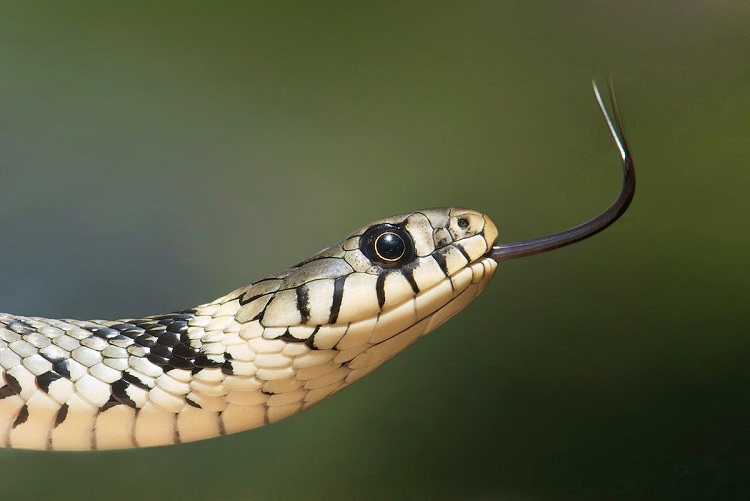
Snakes are found throughout most of America, and encounters with snakes are common. However, the majority of snake species wouldn’t consider an adult cat to be a primary food source. Here are some insights into snakes that may pose a threat to cats:
Pythons and Boas: While pythons are nonvenomous, members of the Pythonidae family can still pose a danger to cats. Any snake large enough to prey upon small mammals may consider cats as potential prey. It’s worth noting that many large, nonvenomous snakes in the U.S., such as boa constrictors, may have started their lives as domestic pets. The Burmese python, for example, has been known to prey upon cats in Florida, where they are established and encounters are not uncommon. Pythons are ambush predators, relying on their strong sense of smell and heat-sensing pits to target their prey before wrapping them in their powerful coils. Constriction by a python can kill a cat in a matter of minutes.
Diamondback Rattlesnakes: The diamondback rattlesnake, the largest venomous snake in the U.S., has been associated with cases of cat bites. Although there’s little evidence of rattlesnakes actively preying upon cats, encounters can be dangerous, particularly if a curious cat antagonizes a rattlesnake. If the snake is hungry and the cat is small enough, the snake may see it as an opportunity for a meal. Rattlesnakes are part of the Viperidae family and are ambush predators. They wait motionless until prey ventures too close, and they deliver hemotoxic venom that causes tissue damage and attacks red blood cells. Envenomation can be fatal to a cat.
Dogs as Cat Predators

While domesticated dogs rarely pose a significant threat to cats for sustenance, there are situations where dog-cat interactions can lead to aggression or even attacks. The dynamics of such interactions can vary widely, influenced by the individual temperaments of the animals involved.
Coyotes as Cat Predators
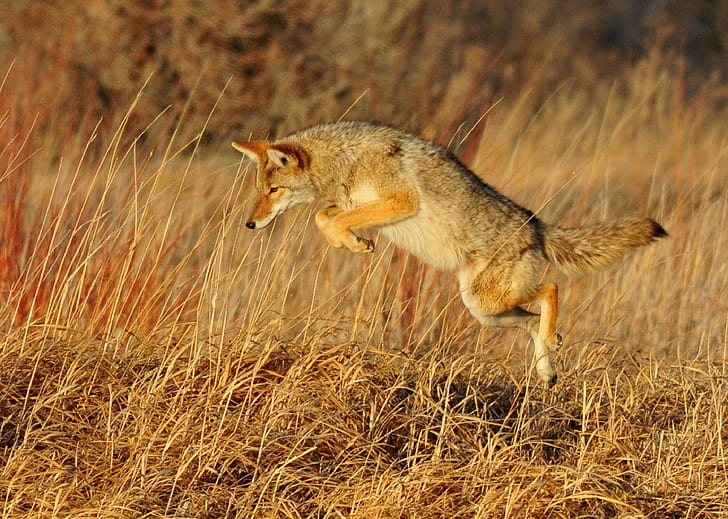
Coyotes are part of the Canidae family and are prevalent throughout the United States.
Studies in the field of wildlife management have found that coyotes actively prey upon cats, especially during the pup-rearing season. Both packs and individual coyotes have been known to successfully attack and kill cats. Coyotes use their keen olfactory senses and sharp eyesight for hunting. They may hunt in pairs or packs for larger prey like deer but will readily target smaller animals like squirrels, rodents, birds, and even domestic cats when hunting alone. Opportunistic by nature, a coyote will prey upon whatever crosses its path.
Wolves as Cat Predators
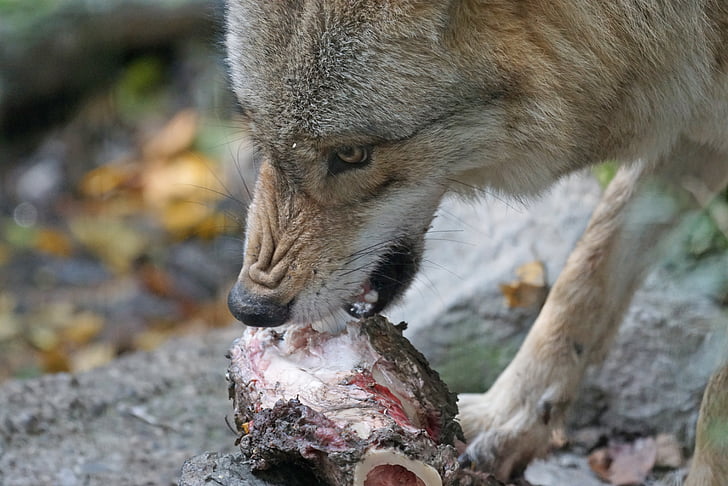
Wolves, the largest surviving members of the Canidae family, play an essential role in controlling prey populations within ecosystems. Due to conservation efforts and the protection of wolves under the Endangered Species Act, wolf-human interactions have become more common, including interactions between wolves and cats. Wolves are opportunistic hunters and may prey upon cats if the opportunity arises. This is more likely during the colder months when other prey is scarce or while the pack is rearing young pups.
Eagles as Cat Predators
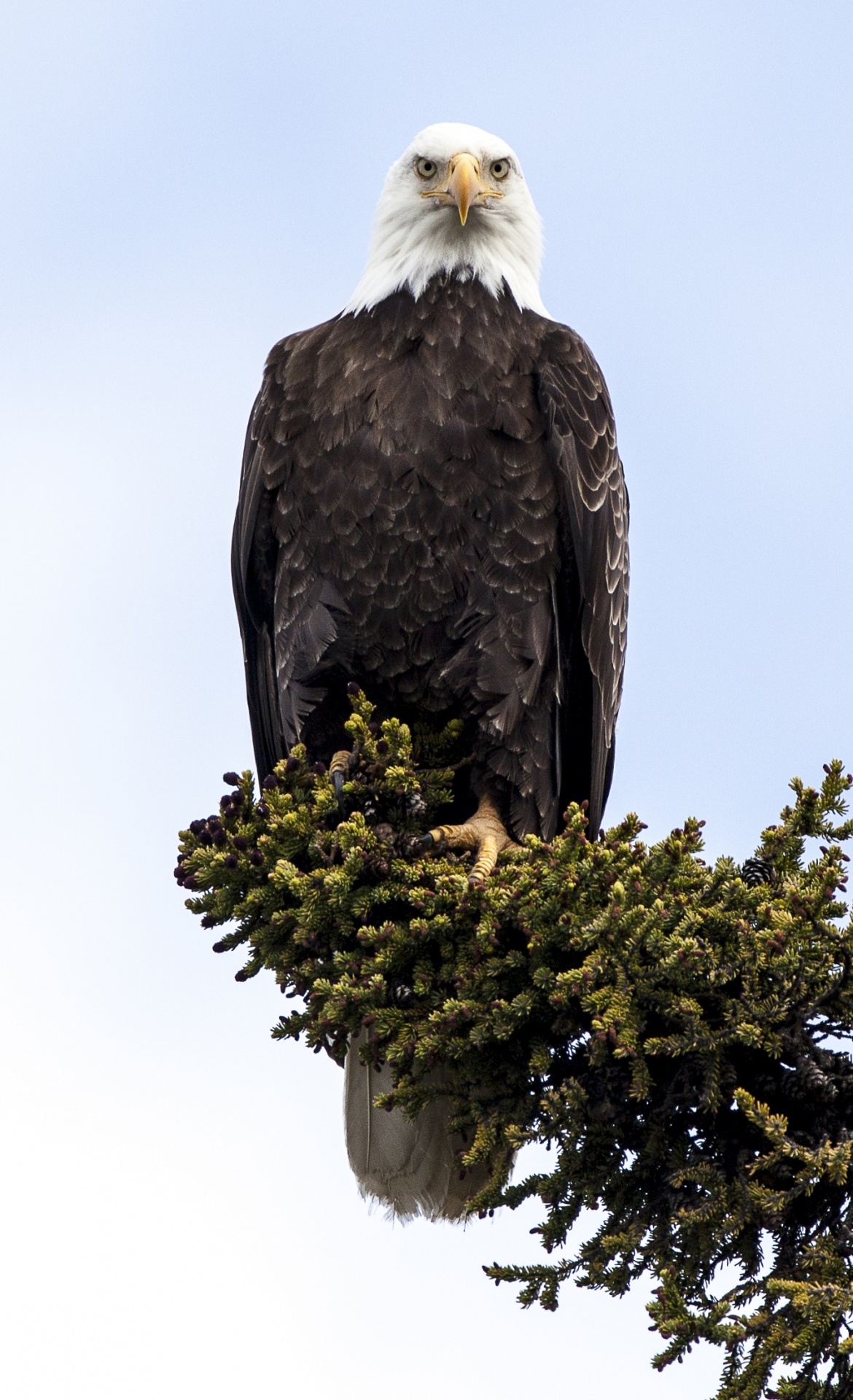
Although eagles are not commonly associated with preying upon cats, there have been instances of these magnificent birds of prey capturing and consuming cats. The size and strength of large eagles, such as the bald eagle, enable them to hunt a variety of prey, including cats, although it’s not a typical occurrence. Bald eagles are known to hunt during the day, swooping down to grasp their prey, which can include fish, birds, small mammals, and rodents. Whether they would actively target cats depends on factors such as food availability and opportunities.
Cougars as Cat Predators
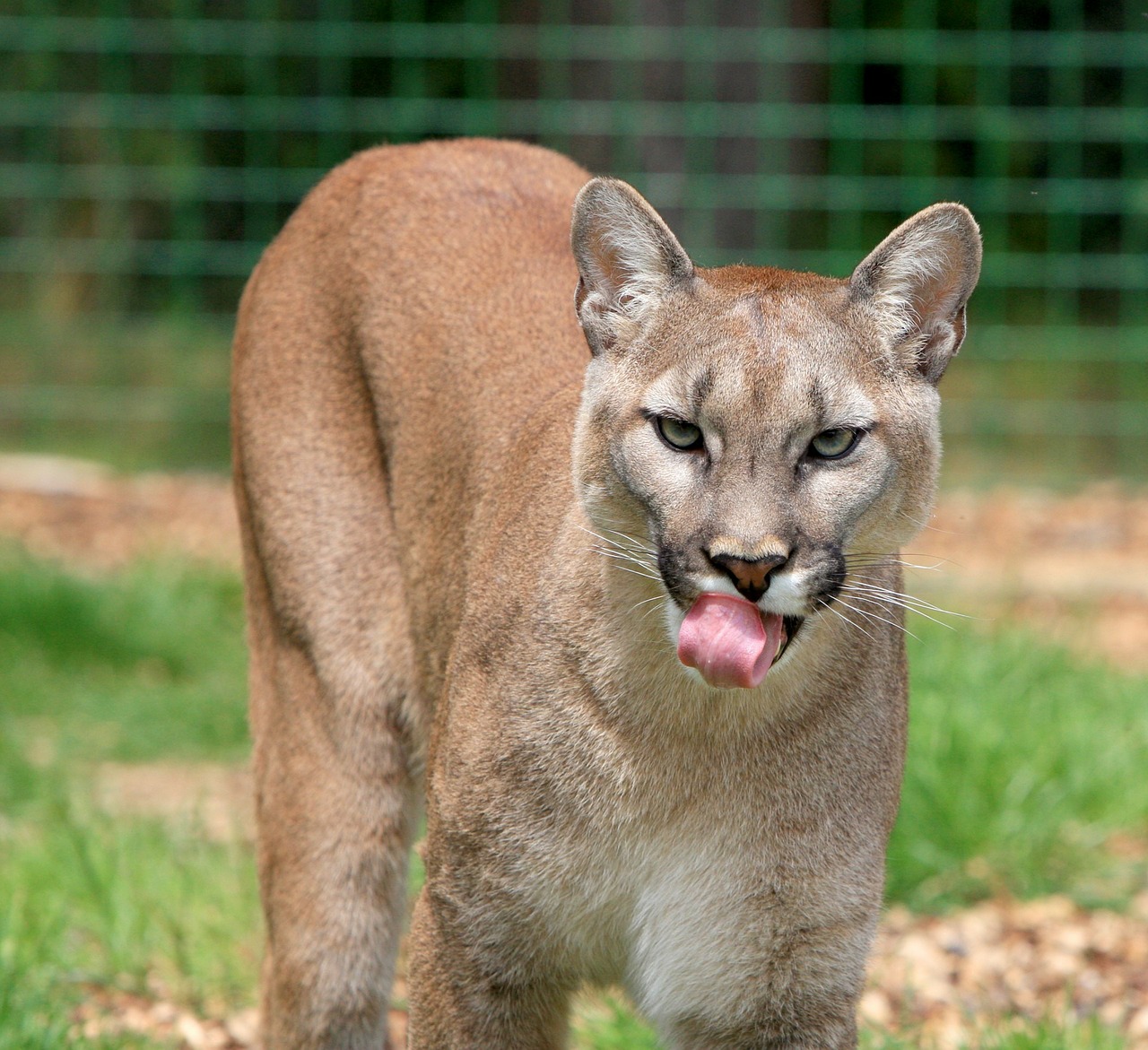
Cougars, also known as pumas or mountain lions, primarily hunt larger mammals such as deer, coyotes, porcupines, elk, and raccoons. However, they are opportunistic and nocturnal hunters, which means they may stealthily target pets, particularly those allowed to roam outside at night. While it’s not their primary source of food, cougars have been known to prey upon pets, especially if they have the chance.
Owls as Cat Predators
Large owls, such as the great horned owl and the snowy owl, are capable of preying upon cats. The great horned owl is known for having one of the most diverse diets among all raptors. Owls hunt from above, usually identifying their prey while perched at a height and then swooping down silently to latch onto it with their sharp talons. Prey is usually killed through crushing by their powerful grip, trauma from the talons, or a quick bite to the neck. Given that cats are similar in size to raccoons and tend to explore outdoors at night, they are at risk of being preyed upon by owls. The silent flight of owls means that a cat may not even realize it’s being hunted until it’s too late.
Hawks as Cat Predators
Of all the hawk species found in the United States, only the red-tailed hawk is known to be capable of preying upon cats. The red-tailed hawk is the most common hawk species in the U.S. and primarily hunts small animals. Smaller cats and kittens may be at risk of predation by red-tailed hawks. While such incidents are not common, they tend to occur when pets are left unsupervised outdoors. Hawks use their excellent eyesight to seek out prey, either by coasting along in the air or finding a comfortable perch and waiting for suitable animals to cross their field of vision.
Wolverines as Cat Predators
Wolverines are intriguing creatures that might be mistaken for small bears, but they belong to the weasel family. Wolverines are known to forage on vegetation and berries, but their diet is primarily meat-based. Wolverines have been linked to attacks on cats, although only a small number of missing cat cases are connected to Wolverine attacks. These incidents are relatively rare, but wolverines have a reputation for attacking and subduing prey many times their size. Wolverines are ground and tree-dwelling animals found in various regions of the U.S., and while they are not generally aggressive, they will act defensively if they perceive a threat.
Understanding Potential Threats to Cats Beyond Predators
While the focus has been primarily on predators that may actively hunt cats, it’s important to recognize that many other animals can inadvertently harm cats. These interactions often result from defensive behaviors or territorial disputes rather than a predator-prey relationship. Here are some examples of animals that can pose a threat to cats:
1. Cats:
Feral and free-roaming domestic cats regularly engage in territorial disputes, although these fights rarely result in fatal wounds. However, the injuries sustained during these altercations can fester and become fatal if left untreated. Cats can be highly territorial, particularly if they are not neutered, and mother cats can become extremely aggressive while rearing their young, especially towards other cats.
2. Rats as Cat Predators:
Historically, cats were employed as natural pest controllers on farms, tasked with controlling rodent populations. Some accounts throughout history mention farmers domesticating cats for this purpose in the Old World. Before thousands of years of selective breeding, cats were effective hunters of large rodents, such as rats. However, most modern domestic cat species are smaller than their ancient ancestors. Rats, on the other hand, are large and will fiercely defend themselves if attacked by a cat. A rat’s teeth can inflict damage, and a desperate rat won’t hesitate to use them. A single bite in the wrong place can puncture an artery. Rats are also carriers of diseases and parasites, making them potential sources of harm to cats.
3. Raccoons as Cat Predators:
Raccoons are common in urban areas and have learned that there’s an abundance of food around human dwellings. The likelihood of a free-roaming cat encountering a raccoon is quite high. Raccoons can overpower adult cats during territorial disputes or fights over food. As nocturnal mammals, raccoons often cross paths with cats while foraging for food. Depending on the availability of food, the encounter between a raccoon and a cat may lead to a tussle. Wild raccoons typically have the advantage of experience and may also have a size and weight advantage over a cat. Larger cat breeds, such as male Norwegian forest cats or male Maine coons, may be more evenly matched against raccoons.
4. Scorpions and Spiders as Cat Predators:
The United States is home to various scorpion species, some of which are venomous. While not all scorpions are dangerous, some, like the bark scorpion, can be deadly, especially to smaller animals like cats. In some cases, scorpion envenomation can be lethal to cats. Scorpions use their venom for both hunting and defense, and they don’t typically see cats as prey. Stings usually occur when a cat tries to play with or attack a scorpion.
Over 3,000 spider species are known to inhabit North America, and only a few of them are considered dangerous to humans and pets. The black widow, brown recluse, and hobo spider are the primary venomous spiders in the region. While spider bites aren’t always fatal to cats, their venom can cause local reactions near the bite, leading to internal and open wounds. These wounds can be susceptible to infection, and spider venom can also trigger various symptoms as the body reacts to the toxic substance. Cats are curious creatures and may encounter spiders
during their explorations.
5. Foxes as Cat Predators:
Foxes have adapted to urban environments, increasing the chances of interactions with cats. These interactions often involve fights, although both participants tend to come away with injuries that are rarely fatal. Foxes are similar in size to adult cats, which means they don’t typically actively hunt adult cats. However, small kittens may be more vulnerable to fox attacks, particularly if a fox is starving or feels threatened. Foxes will also fiercely defend their cubs if a cat wanders too close. Additionally, foxes are scavengers, so if they stumble upon a dead cat, they may consume the carcass or relocate it to a safer place for consumption.
6. Porcupines as Cat Predators:
Porcupines are large rodents with few natural predators due to their formidable quills. However, a curious or aggressive cat may make the mistake of approaching a porcupine. Porcupines are ground and tree-dwelling creatures found throughout various regions of the U.S. While they are not typically aggressive, they will act defensively if approached by what they perceive as a threat. A porcupine’s defense mechanism involves swinging its tail around to stab aggressors with dozens of quills. These quills have barbs that allow them to pierce flesh and remain lodged within. While rarely fatal, porcupine quills can cause discomfort to cats, especially if they become embedded in sensitive areas like the throat.
7. Venomous Snakes as Cat Predators:
Beyond diamondback rattlesnakes, numerous venomous snake species inhabit the United States, and any of these snakes can seriously harm or kill a cat. Some of the venomous snakes in the U.S. include coral snakes, copperheads, timber rattlesnakes, Mojave rattlesnakes, and Massasauga rattlesnakes. The venom of these snakes varies in potency and lethality. If a snake bites a cat, it’s crucial to seek veterinary care immediately, even if you’re uncertain about the snake’s identity. Veterinary clinics may offer supportive therapy and have venom detection kits to identify the type of venom involved.
Coral Snakes: Highly venomous coral snakes can be found throughout North America. Their neurotoxic venom is delivered through short fangs, and while cats may not be considered a primary meal, they may defend themselves with a deadly bite. Without prompt treatment, a coral snake bite can lead to paralysis and respiratory failure, potentially fatal for a cat.
Copperheads: Copperheads, common in North America, have a mildly venomous bite for a pit viper. While their bites are usually non-fatal in adult humans, cats may not be as fortunate. A copperhead’s hemotoxic venom causes local damage at the bite site, and it has been noted that copperheads inject little venom when biting defensively. Adult cats are typically too large to be considered a meal.
Rattlesnakes: The United States is home to several rattlesnake species, all of which are venomous and capable of killing a cat. While large rattlesnakes are more likely to prey on small kittens, they will defend themselves if threatened by a cat. The composition of snake venom can vary not only between species but within species as well. Some populations may have purely hemotoxic venom, while others may have a combination of hemotoxic and neurotoxic venom.
- The Tiger Rattlesnake: Inhabiting a relatively small area between Arizona and Mexico, the tiger rattlesnake is known for having highly potent hemotoxic and neurotoxic venom. It is considered one of the most toxic of all rattlesnakes and one of the most dangerous snakes in the Western Hemisphere. While it primarily preys on small mammals, birds, frogs, and even other snakes, small cats may be consumed if they cross paths.
- The Massasauga Rattlesnake: This smaller rattlesnake species has hemolytic venom and tends to avoid human settlements. While its venom is potent, it typically injects less venom per bite than other pit vipers.
- The Mojave Rattlesnake: Found in the southwestern states and central Mexico, the Mojave rattlesnake boasts neurotoxic venom and is considered one of the world’s most venomous snakes. Contrary to its reputation as an overly aggressive snake, it typically acts defensively and may strike more readily than other snakes. Its venom can cause paralysis and other severe symptoms.
- The Timber Rattlesnake: This rattlesnake, found in various regions of the U.S., has venom that destroys tissue and may contain neurotoxic or hemotoxic components. While it can grow quite large, with adults easily reaching five feet in length, its primary diet consists of small mammals, birds, frogs, and even other snakes. Small cats may be at risk if they encounter a timber rattlesnake.
The Unique Behaviors of Different Predators and Potential Threats
Predators and potential threats to cats have a wide range of behaviors and characteristics, which influence their interactions with felines. Understanding these behaviors can help cat owners make informed
decisions about how to protect their pets.
Cats as Cat Predators:
Understanding the behavior of domestic cats is crucial for preventing potential conflicts and dangers. Cats are territorial creatures, and their behavior varies based on factors such as age, sex, and socialization. Cats may establish territories within homes, interact aggressively with other cats in the neighborhood, or engage in predatory behavior towards smaller animals, birds, and insects. Domestic cats typically avoid confrontations that could result in injury, territorial disputes, or misunderstandings with other animals, including dogs and wildlife, which may lead to physical altercations.
Dogs as Cat Predators:
Interactions between cats and dogs can vary widely depending on the individual animals involved. Some dogs and cats coexist peacefully, while others may engage in aggressive behaviors. The dynamics between cats and dogs are influenced by their temperaments, socialization, and past experiences. Cats may puff up and hiss as a threat display when they feel threatened, while dogs may bark, growl, or chase a cat. Aggressive dogs or feral dogs may pose a greater threat to cats and can actively hunt them, especially if they view the cat as prey.
Birds of Prey as Cat Predators:
Birds of prey exhibit various hunting behaviors that differ from those of mammals. Raptors, such as eagles, hawks, and owls, rely on their keen eyesight and exceptional hunting skills to locate and capture prey. These birds typically hunt from perches or while soaring in the sky. When they identify suitable prey, they use their powerful talons to capture and subdue it. Birds of prey are less likely to actively seek out cats as prey unless the cat is small and unsupervised. However, they may see cats as potential prey if they encounter them while hunting for smaller mammals, birds, or rodents.
Snakes as Cat Predators:
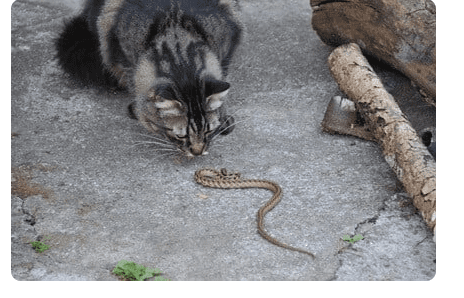
Snakes are known for their stealthy hunting tactics, primarily relying on their sense of smell and heat-sensing pits to locate prey. While snakes like pythons and boas use constriction to subdue their prey, venomous snakes inject venom into their victims. Encounters between cats and snakes can be dangerous, especially if the cat tries to play with or attack a snake. Cats are naturally curious, and they may not recognize the danger posed by venomous snakes. It’s crucial for cat owners to be vigilant in areas where venomous snakes are present and seek immediate veterinary care if a cat is bitten.
Large Carnivores as Cat Predators:
Large carnivores, including cougars, wolves, and coyotes, have different hunting strategies and behaviors. These animals are typically opportunistic hunters, meaning they will prey upon whatever is available, including domestic cats, when other food sources are scarce. Cougars are solitary and nocturnal hunters, known for their stealth and ambush tactics. Wolves are pack animals that work together to take down larger prey but may target cats when hunting alone. Coyotes are highly adaptable and opportunistic, often hunting in packs but also preying on cats when the chance arises.
Mitigating Risks to Your Cat
As responsible cat owners, it’s crucial to take steps to mitigate potential risks to your feline companion. Here are some strategies to protect your cat from predators and other potential threats:
1. Keep Cats Indoors:
One of the most effective ways to protect your cat from predators and other dangers is to keep them indoors. Indoor cats are less likely to encounter wildlife, traffic, or other hazards. Providing your cat with plenty of stimulation, including toys, scratching posts, and interactive playtime, can help keep them happy and content indoors.
2. Supervise Outdoor Time:
If you want to allow your cat some outdoor time, consider using a leash and harness or a secure outdoor enclosure (commonly known as a “catio”). This allows your cat to enjoy the sights, sounds and smells of the outdoors while remaining safe from potential threats.
3. Be Aware of Local Wildlife:
Research the wildlife species in your area and their behaviors to understand the potential risks to your cat. Knowing which predators are present can help you take appropriate precautions.
4. Avoid Attracting Wildlife:
To reduce the likelihood of encounters with wildlife, secure your garbage cans and avoid leaving pet food or water outside. This can help prevent raccoons, foxes, and other scavengers from being drawn to your property.
5. Vaccinate and Microchip Your Cat:
Ensure your cat is up-to-date on vaccinations, including those for diseases like rabies. Microchipping your cat and keeping their contact information current can help reunite you with your pet if they ever become lost.
6. Provide Safe Shelter:
If you have an outdoor cat or a feral cat colony, provide shelter options that are safe from predators. Elevated shelters, enclosed boxes, or secure structures can offer protection from both wildlife and harsh weather.
7. Educate Neighbors and Communities:
Raise awareness about the risks that outdoor cats face and encourage responsible pet ownership within your community. Engaging in conversations about cat safety can lead to positive changes in local attitudes and policies regarding outdoor cats.
8. Consider Motion-Activated Lights and Alarms:
Installing motion-activated lights and alarms in your yard can deter nocturnal predators like raccoons and opossums. These devices can startle and deter wildlife when they approach your property.
9. Train Your Cat:
Teaching your cat to come when called or respond to certain cues can help you maintain control in outdoor situations. This training can be especially useful if your cat is allowed supervised outdoor access.
10. Monitor Your Cat’s Health:
Regularly check your cat for any signs of injury or illness, especially if they have been outdoors. Prompt veterinary care can prevent minor issues from becoming major health problems.
What Animal Will Kill And Eat Kittens?
Many animals, both wild and domestic, may kill and eat kittens if given the opportunity. Some of the most common predators that pose a threat to kittens include:
- Coyotes: Coyotes are opportunistic predators and may prey on kittens if they come across them. They are known to be a significant threat to outdoor and feral cat populations.
- Foxes: Foxes, especially in rural areas, may pose a threat to kittens. Like coyotes, they are opportunistic hunters.
- Birds of Prey: Large birds of prey, such as eagles, hawks, and owls, can potentially capture and kill kittens, especially if the kittens are left unsupervised outdoors.
- Raccoons: Raccoons are omnivorous scavengers and may harm or kill kittens, especially during territorial disputes over food or shelter.
- Snakes: Venomous snakes can pose a danger to kittens if they come into contact. While snakes are more likely to bite in self-defense, a curious kitten may approach them, putting themselves at risk.
- Other Cats: In some cases, adult cats, including feral or territorial cats, may attack and kill kittens, particularly if they perceive them as a threat or competition.
- Dogs: If not properly introduced or supervised, dogs, whether feral or domestic, may harm or kill kittens.
To protect kittens from these potential threats, it is essential to keep them indoors or provide secure outdoor enclosures (catios) where they can safely explore without exposure to predators. Additionally, early socialization and supervision are essential when introducing kittens to other animals, including adult cats and dogs.
Conclusion
Cats, despite their reputation as independent and capable hunters, face various potential threats and predators in their environment. Understanding the behaviors and characteristics of these animals is crucial for cat owners seeking to protect their feline companions. While the risks of predation and harm from other animals exist, responsible pet ownership and proactive measures can significantly reduce these dangers. Whether by keeping cats indoors, providing supervised outdoor time, or educating communities about cat safety, cat owners can take steps to ensure their pets lead long, happy, and safe lives in both urban and rural settings.
By being informed and taking appropriate precautions, cat owners can help their beloved feline friends navigate the world of potential threats and enjoy a fulfilling life as cherished members of their households.

